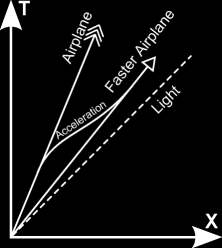Sophistication is a French invention. The French are masters when it comes to nurturing, and more importantly, selling sophistication. Think of some expensive (and therefore classy) brands. Chances are that more than half of the ones that spring to mind would be French. And the other half would be distinctly French sounding wannabes. This world domination in sophistication is impressive for a small country of the size and population of Thailand.
How do you take a handbag manufactured in Indonesia, slap on a name that only a handful of its buyers can pronounce, and sell it for a profit margin of 1000%? You do it by championing sophistication; by being an icon that others can only aspire to be, but never ever attain. You know, kind of like perfection. No wonder Descartes said something that sounded suspiciously like, “I think in French, therefore I am!” (Or was it, “I think, therefore I am French”?)
I am amazed by the way the French manage to have the rest of the world eat things that smell and taste like feet. And I stand in awe of the French when the world eagerly parts with their hard earned dough to gobble up such monstrosities as fattened duck liver, fermented dairy produce, pig intestines filled with blood, snails, veal entrails and whatnot.
The French manage this feat, not by explaining the benefits and selling points of these, ahem…, products, but by a perfecting a supremely sophisticated display of incredulity at anyone who doesn’t know their value. In other words, not by advertising the products, but by embarrassing you. Although the French are not known for their physical stature, they do an admirable job of looking down on you when needed.
I got a taste of this sophistication recently. I confessed to a friend of mine that I never could develop a taste for caviar — that quintessential icon of French sophistication. My friend looked askance at me and told me that I must have eaten it wrong. She then explained to me the right way of eating it. It must have been my fault; how could anybody not like fish eggs? And she would know; she is a classy SIA girl.
This incident reminded me of another time when I said to another friend (clearly not as classy as this SIA girl) that I didn’t quite care fore Pink Floyd. He gasped and told me never to say anything like that to anybody; one always loved Pink Floyd.
I should admit that I have had my flirtations with bouts of sophistication. My most satisfying moments of sophistication came when I managed to somehow work a French word or expression into my conversation or writing. In a recent column, I managed to slip in “tête-à-tête,” although the unsophisticated printer threw away the accents. Accents add a flourish to the level of sophistication because they confuse the heck out of the reader.
The sneaking suspicion that the French may have been pulling a fast one on us crept up on me when I read something that Scott Adams (of Dilbert fame) wrote. He wondered what this ISO 9000 fad was all about. Those who secure the ISO certification proudly flaunt it, while everybody else seems to covet it. But does anyone know what the heck it is? Adams conjectured that it was probably a practical joke a bunch of inebriated youngsters devised in a bar. “ISO” sounded very much like “Iz zat ma beer?” in some eastern European language, he says.
Could this sophistication fad also be a practical joke? A French conspiracy? If it is, hats off to the French!
Don’t get me wrong, I’m no Francophobe. Some of my best friends are French. It is not their fault if others want to imitate them, follow their gastronomical habits and attempt (usually in vain) to speak their tongue. I do it too — I swear in French whenever I miss an easy shot in badminton. After all, why waste an opportunity to sound sophisticated, n’est-ce pas?



 In order to make use of this principle, Einstein perhaps thought of it in pictures. What does acceleration mean? It is how fast the speed of something is changing. And what is speed? Think of something moving in a straight line — our cruising airplane, for instance, and call the line of flight the X-axis. We can visualize its speed by thinking of a time T-axis at right angles with the X-axis so that at time = 0, the airplane is at x = 0. At time t, it is at a point x = v.t, if it is moving with a speed v. So a line in the X-T plane (called the world line) represents the motion of the airplane. A faster airplane would have a shallower world line. An accelerating airplane, therefore, will have a curved world line, running from the slow world line to the fast one.
In order to make use of this principle, Einstein perhaps thought of it in pictures. What does acceleration mean? It is how fast the speed of something is changing. And what is speed? Think of something moving in a straight line — our cruising airplane, for instance, and call the line of flight the X-axis. We can visualize its speed by thinking of a time T-axis at right angles with the X-axis so that at time = 0, the airplane is at x = 0. At time t, it is at a point x = v.t, if it is moving with a speed v. So a line in the X-T plane (called the world line) represents the motion of the airplane. A faster airplane would have a shallower world line. An accelerating airplane, therefore, will have a curved world line, running from the slow world line to the fast one.